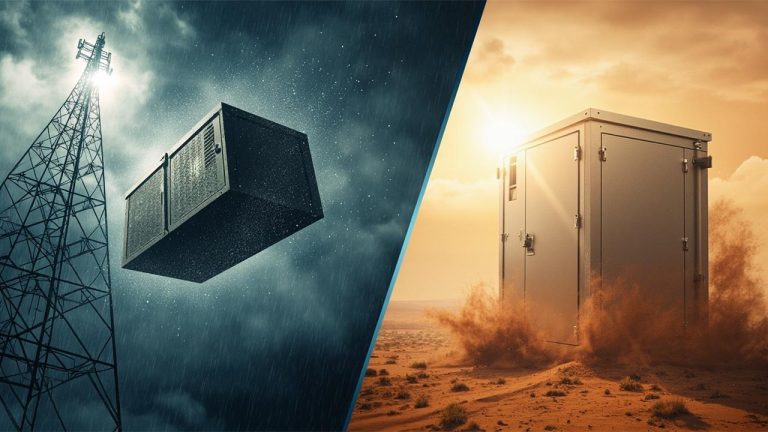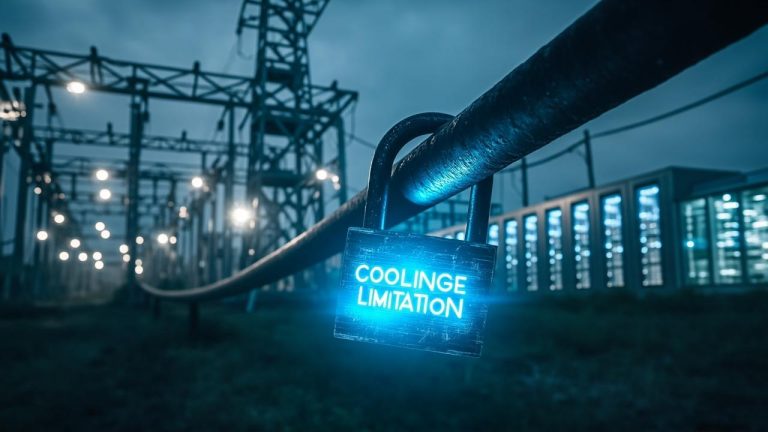Why 100 MW? Understanding the Building Block
The world’s appetite for power is growing at an unprecedented rate, driven by factors like population growth, industrial expansion, and the electrification of everything from transportation to home heating. Meeting this demand requires innovative approaches to power infrastructure development. Planning and executing large-scale energy projects presents unique challenges, but also significant opportunities for efficiency and sustainability. Projects at the megawatt scale are increasingly necessary to meet this growth.
This article introduces the “100 Megawatt Mindset” – a structured, modular approach to planning, building, and operating energy infrastructure. We propose that thinking in 100 MW increments offers a sweet spot between smaller, distributed generation projects and massive, multi-gigawatt undertakings. This modularity allows for staged development, adapting to evolving energy needs and technological advancements, mitigating risks, and streamlining the overall project lifecycle.
Embracing a 100 MW building block strategy offers a powerful framework for tackling complex energy challenges. This approach facilitates scalability by allowing for the seamless integration of multiple 100 MW units to create larger, more complex systems. Furthermore, this strategy can accommodate various energy sources, fostering a resilient and reliable grid capable of meeting the demands of a rapidly changing world.
Defining Your Energy Need
To accurately plan for future energy infrastructure, a deep understanding of present and future needs is paramount. This involves more than a simple snapshot of current consumption; it requires a dynamic forecast considering numerous influencing factors. Without a clear definition of energy needs, attempting to build in 100 MW increments, or any increment for that matter, becomes a shot in the dark. Scalability is inherently tied to this foundational understanding.
Forecasting and Demand Analysis
Accurate forecasting starts with gathering data. This includes historical energy consumption patterns, demographic trends, and economic projections. Population growth is a primary driver, naturally increasing residential energy demand. Industrial expansion, particularly the development of energy-intensive industries, can dramatically shift the load profile. The increasing electrification of transportation, with the rise of electric vehicles (EVs), represents another significant factor contributing to future energy demand. Each of these factors needs to be carefully modeled to project future energy needs.
Translating Projections Into 100 MW Units
Once a comprehensive energy demand projection is established, it needs to be translated into actionable 100 MW units. This involves understanding the time-dependent nature of demand. A load profile, illustrating energy consumption over a period (e.g. daily, weekly, or annually), is essential. This profile reveals peak demand periods, base load requirements, and overall variability.
Matching generation capacity to this dynamic demand requires careful planning. For example, a region with rapidly growing EV adoption may need to add 100 MW blocks that are flexible and can respond to increased evening peak demands as people charge their vehicles after work.
Energy efficiency initiatives, while not directly adding to the *megawatt scale* supply, play a crucial role in reducing overall demand and lessening the need for additional generation capacity. Implementing smart grid technologies and promoting energy conservation can significantly impact long-term energy needs and the number of 100 MW units required.
Technology Selection
The selection of appropriate energy generation technologies is paramount when planning projects in 100 MW increments. This process should involve a thorough evaluation of various options, considering a range of factors beyond just initial cost.
While solar photovoltaic (PV) and onshore wind are often frontrunners due to their decreasing costs and increasing efficiency, other technologies like natural gas combined cycle plants, battery energy storage systems (BESS), geothermal, and biomass can also be viable depending on the specific context and resource availability. Each technology brings a unique set of pros and cons related to environmental impact, grid stability, operational flexibility, and permitting requirements, necessitating a detailed comparative analysis.
A critical aspect of technology selection is the concept of technology neutrality. This means avoiding pre-conceived biases towards specific solutions and instead focusing on identifying the technologies that best meet the defined energy needs and project objectives. For example, while a region with abundant sunshine might naturally lean towards solar PV, the intermittent nature of solar power necessitates the consideration of energy storage solutions or alternative dispatchable generation sources to ensure grid reliability.
Similarly, a location with access to geothermal resources could leverage this baseload power source to provide a consistent and predictable energy supply. The key is to evaluate each technology objectively, considering its strengths and weaknesses within the specific project context.
Increasingly, hybrid solutions are gaining traction as a way to enhance grid resilience and optimize energy delivery. These involve integrating multiple energy sources, such as combining solar PV with battery storage or pairing wind farms with natural gas peaker plants. Hybrid systems can offer a more balanced and reliable energy supply compared to relying on a single technology.
For instance, a solar-plus-storage project can provide clean energy during the day while using battery storage to extend the availability of solar power into the evening hours, reducing the reliance on fossil fuels. By carefully selecting and integrating different technologies, project developers can create a flexible and sustainable energy system optimized for their specific needs.
The economic viability of each technology must be analyzed using a variety of project finance and engineering methodologies to ensure long-term sustainability of the project. A detailed cost-benefit analysis should be conducted.
The result will yield the levelized cost of electricity (LCOE) for each technology, which when evaluated against the demand and pricing analysis will allow for a proper decision to be made. Implementing these technologies at the megawatt scale provides project developers the opportunity to learn from the project.
| Technology | Pros | Cons |
|---|---|---|
| Solar PV | Low operating costs, decreasing capital costs, clean energy | Intermittent, requires large land area, dependent on weather |
| Onshore Wind | Low operating costs, abundant resource in some regions, clean energy | Intermittent, visual impact, noise pollution, impact on wildlife |
| Natural Gas Combined Cycle | Dispatchable, relatively low emissions compared to coal, high efficiency | Fossil fuel-based, subject to fuel price volatility, carbon emissions |
| Battery Energy Storage Systems (BESS) | Fast response time, grid stabilization, enables integration of renewables | High capital costs, limited discharge duration, degradation over time |
Siting and Permitting
The selection of a location is critical to the overall success of any energy project. This process needs to consider multiple interconnected criteria. One of the initial, and most pragmatic, concerns is access to existing grid infrastructure. Proximity to transmission lines and substations dramatically reduces the cost and complexity of connecting the new generating capacity to the wider grid.
Land availability and suitability are also crucial. The topography, soil conditions, and existing land use must be evaluated to determine the feasibility of construction and operation. Environmental impact assessments are another key factor, as projects must comply with environmental regulations and minimize their footprint. Finally, and increasingly important, is community acceptance; engaging with local residents and addressing their concerns early in the process is essential for building support and avoiding delays.

Securing the necessary permits for a new energy project can often be a long and complex process, as different jurisdictions have their own requirements. The specific permits required will vary depending on the project type, location, and size. In general, projects will need to comply with local zoning regulations, as well as environmental regulations at the regional, state, and even national level.
This may include permits for air emissions, water discharge, and waste disposal. Early engagement with regulatory agencies is critical for understanding the permitting process and identifying any potential roadblocks. A proactive and transparent approach can help to streamline the permitting process and avoid costly delays.
Minimizing environmental impact is a key consideration throughout the siting and permitting process. Developers must consider the potential impacts on air quality, water resources, wildlife habitats, and cultural resources. This may involve conducting environmental impact assessments, implementing mitigation measures, and obtaining necessary permits.
Examples of key steps include:
Successfully navigating this landscape requires a proactive approach, a deep understanding of relevant regulations, and a commitment to working collaboratively with stakeholders. The ability to address these challenges effectively is essential for bringing new energy projects to the megawatt scale and ensuring a sustainable energy future.
Financing 100 MW
Financing large-scale energy projects requires a multifaceted approach, and securing the necessary capital stack is often the most challenging aspect of bringing a project to fruition. Several avenues exist for funding these endeavors, each with its own set of requirements and considerations. Understanding these options and crafting a compelling financial narrative are crucial for success.
Exploring Financing Avenues
Project finance remains a popular method, particularly for renewable energy projects. This approach relies on the projected cash flows of the project itself to repay the debt, rather than the balance sheet of the sponsoring company. Equity investment, whether from private equity firms, infrastructure funds, or strategic investors, provides a vital source of capital and aligns interests for long-term success.
Debt financing, typically in the form of loans from commercial banks or institutional lenders, can provide significant leverage and reduce the overall cost of capital. Government grants and incentives can also play a critical role, particularly for innovative technologies or projects that support broader policy goals.
The Power Purchase Agreement
A Power Purchase Agreement (PPA) is a cornerstone of financing, especially for renewable energy projects. A PPA is a long-term contract with a creditworthy off-taker, typically a utility or a large corporation, to purchase the electricity generated by the project at a predetermined price. This provides a predictable revenue stream that is essential for securing debt financing and attracting equity investors.
The terms of the PPA, including the price, duration, and volume commitments, will significantly impact the project’s financial viability and its ability to attract capital. The stronger the PPA, the better the financing terms available to the project.
Financial Modeling and Risk Mitigation
A robust financial model is paramount. This model should accurately project revenues, expenses, and cash flows over the project’s entire lifespan, taking into account various sensitivities and scenarios. Detailed due diligence, including technical, legal, and environmental assessments, is essential for identifying and mitigating potential risks.
Furthermore, strategies for mitigating financial risks, such as currency fluctuations, commodity price volatility, and construction delays, are vital for ensuring the project’s financial stability. The growing emphasis on Environmental, Social, and Governance (ESG) factors has also led to an increase in green bonds and sustainable financing options, which can provide access to a broader pool of investors interested in supporting environmentally responsible projects on a megawatt scale.
Construction and Commissioning
Constructing a 100 MW energy project is a multifaceted endeavor that demands meticulous planning, stringent quality control, and unwavering adherence to safety protocols. The initial phase involves site preparation, which includes clearing land, grading, and establishing access roads. Simultaneously, the procurement of critical components, such as solar panels, wind turbines, or gas turbines, depending on the technology selected, must be carefully managed to avoid supply chain bottlenecks.
The construction phase itself involves the installation of these components, along with the necessary electrical infrastructure, such as transformers, switchgear, and transmission lines. Effective project management is paramount, requiring close coordination between various contractors, engineers, and suppliers to ensure that the project stays on schedule and within budget.
Potential challenges during construction are numerous and can significantly impact project timelines and costs. Supply chain disruptions, labor shortages, and adverse weather conditions are all potential obstacles that must be proactively addressed. For instance, a sudden increase in the price of steel could necessitate renegotiating contracts or finding alternative materials. Similarly, a shortage of qualified electricians could delay the installation of electrical infrastructure.
Weather-related delays, such as heavy rains or extreme temperatures, can also disrupt construction activities. Therefore, contingency plans and risk mitigation strategies are essential to minimize the impact of these challenges. Moreover, the modular construction techniques may accelerate project timelines.
The commissioning process marks the transition from construction to operation. This involves rigorous testing and validation of all systems and components to ensure that they meet performance specifications. Each piece of equipment is tested individually and then as part of the integrated system.
Protective relays, control systems, and communications are all thoroughly tested and calibrated. Performance testing, such as ramp rate testing for battery storage or power curve testing for wind turbines, is conducted to verify that the project can deliver the expected output.
Only after all testing is successfully completed and the project meets all safety and performance requirements can it be declared ready for commercial operation. The commissioning process is a critical step in ensuring the long-term reliability and performance of the energy project. Implementing techniques like modular construction can expedite these stages. Thinking in terms of a megawatt scale increment helps to define the scope of these project activities.
| Phase | Key Activities | Potential Challenges |
|---|---|---|
| Site Preparation | Land clearing, grading, access road construction | Environmental concerns, permitting delays |
| Component Procurement | Sourcing and delivery of equipment (solar panels, turbines, etc.) | Supply chain disruptions, price volatility |
| Commissioning | Thorough testing and validation of all systems and components | Equipment malfunctions, integration issues |
Operations and Maintenance
Once the project is operational, a well-defined operations and maintenance (O&M) plan becomes paramount to ensuring optimal performance and longevity. This plan should encompass a range of activities designed to keep the facility running smoothly and efficiently. Preventive maintenance forms the cornerstone, involving regular inspections, servicing, and component replacements based on manufacturer recommendations and operational experience.
Corrective maintenance addresses unexpected breakdowns and equipment failures, requiring rapid response and skilled technicians to minimize downtime. A comprehensive O&M plan outlines procedures for both scenarios, detailing responsibilities, schedules, and resource allocation.

Data analytics and predictive maintenance are increasingly playing a critical role in modern O&M strategies. By continuously monitoring key performance indicators (KPIs) such as energy output, equipment temperature, and vibration levels, anomalies can be detected early, potentially preventing catastrophic failures. Sophisticated algorithms can analyze historical data to predict when equipment is likely to require maintenance, allowing for proactive interventions.
This approach minimizes unplanned downtime, reduces maintenance costs, and extends the lifespan of critical assets. The effective use of data not only improves the overall performance of the 100 MW facility but also contributes to a more reliable and cost-effective energy supply.
Furthermore, remote monitoring and control capabilities are essential for modern energy facilities. These systems allow operators to remotely monitor the status of equipment, adjust operating parameters, and respond to alarms from anywhere with an internet connection. This is particularly valuable for facilities located in remote areas or those with limited on-site staff.
Remote access also facilitates faster response times to emergencies and enables operators to optimize performance based on real-time conditions. Finally, with the increasing reliance on digital technologies, robust cybersecurity measures are critical to protecting critical energy infrastructure from cyber threats. Implementing firewalls, intrusion detection systems, and regular security audits helps safeguard the facility’s control systems and data from unauthorized access, ensuring the continued safe and reliable operation of the megawatt scale power plant.
Scaling Up
The true power of the 100 MW building block approach lies in its inherent scalability. It’s not just about building a single 100 MW facility; it’s about establishing a framework that allows for the seamless integration of multiple such units into larger, more complex energy systems.
Think of it as building with LEGOs – each 100 MW block is a standardized module that can be connected and combined with others to create a diverse range of energy solutions, from localized microgrids to large regional power plants. This modularity is key to adapting to evolving energy needs and technological advancements.
The beauty of this approach also lies in the potential for integrating different energy sources. The 100 MW building block provides a manageable scale at which various technologies can be effectively combined. Imagine a scenario where a 100 MW solar farm is coupled with a 100 MW wind farm and a 100 MW battery energy storage system (BESS).
This hybrid system offers a more resilient and reliable power supply than any of these technologies could provide on their own. It also allows for a more flexible response to changing grid conditions and energy demands.
Consider the various ways these building blocks can work together:
- Distributed Generation: Several 100 MW units can be strategically located throughout a region to provide localized power generation, reducing transmission losses and improving grid resilience.
- Large-Scale Power Plants: Multiple 100 MW units can be aggregated to create larger, multi-hundred megawatt or even gigawatt scale power plants, offering economies of scale and improved efficiency.
- Hybrid Systems: As mentioned above, combining different technologies within the 100 MW framework allows for a more balanced and reliable energy supply.
Ultimately, a successful scaling strategy depends on grid modernization and the implementation of smart grid technologies. These advanced systems enable better communication and control across the entire energy network, facilitating the integration of large-scale renewable energy sources and improving overall grid stability. By embracing this concept, we can build the energy infrastructure of the future, one 100 MW block at a time, scaling efficiently to meet the demands of a rapidly evolving world.
Conclusion
The escalating demand for power requires innovative and practical solutions, and the “How to Think and Build in 100 Megawatt Increments” methodology provides a clear roadmap for navigating the complexities of modern energy infrastructure development. By embracing the 100 MW building block as a fundamental unit, developers, policymakers, and investors can unlock unparalleled levels of efficiency, scalability, and risk management.
This structured approach fosters a more adaptable and responsive energy sector, poised to meet the ever-evolving needs of communities and industries alike.
The principles outlined in this approach are not just theoretical; they are a practical framework for building a sustainable energy future. The modularity inherent in the 100 MW mindset allows for phased development, enabling projects to align with evolving energy needs and technological advancements.
This iterative process allows for better management of capital expenditure, reduces the risk of stranded assets, and fosters a more agile approach to grid modernization. As we transition towards a cleaner energy landscape, the ability to deploy resources strategically and efficiently becomes paramount.
Ultimately, the success of any energy project hinges on a well-defined plan, meticulous execution, and a keen understanding of the underlying energy demand. By adopting the 100 MW mindset, stakeholders can empower themselves to navigate the challenges of large-scale projects.
It’s time to embrace this structured approach and unlock the full potential of the megawatt scale, ushering in a new era of clean, reliable, and affordable energy for all. Contact us today to learn how you can implement the 100 MW mindset into your energy strategy and drive a sustainable future.
Frequently Asked Questions
What does ‘megawatt scale’ typically refer to in terms of power generation or consumption?
‘Megawatt scale‘ in power generation or consumption generally signifies a substantial level of electrical power, typically referring to one million watts or more. It indicates projects or facilities that produce or require a significant amount of electricity to operate, implying they serve a large population or a demanding industrial process.
This scale distinguishes large power plants and industrial consumers from smaller residential or commercial users.
What are some common applications or industries that require power at a megawatt scale?
Several industries and applications commonly require power at a megawatt scale. These include manufacturing plants producing goods like steel, automobiles, or chemicals. Data centers, with their vast computing infrastructure, are significant consumers. Large hospitals and universities, requiring power for various operations and research, also fall into this category, as do wastewater treatment plants serving large metropolitan areas.
What are the key differences between a megawatt-scale project and smaller-scale projects?
Megawatt-scale projects differ significantly from smaller-scale ones in several key aspects. Larger projects involve much higher capital investments and require more extensive planning and permitting processes. Their impact on the environment and local communities is also much greater, necessitating thorough environmental impact assessments and community engagement initiatives. The complexity of grid integration and distribution is considerably higher.
What are the estimated costs associated with developing a megawatt-scale energy project?
Estimating the costs associated with developing a megawatt-scale energy project is complex and depends on several factors. These include the technology used (solar, wind, nuclear, etc.), geographic location, permitting requirements, and financing terms. Costs can range from several million to hundreds of millions of dollars. These costs include equipment procurement, construction, land acquisition, and grid connection expenses.
What are the environmental considerations and regulations surrounding megawatt-scale power generation facilities?
Environmental considerations are central to megawatt-scale power generation facilities. They require thorough environmental impact assessments to address air and water pollution, land use changes, and potential effects on wildlife. Regulations often require implementing emissions controls, wastewater treatment systems, and habitat mitigation strategies. Compliance with these requirements can significantly impact project costs and timelines.




